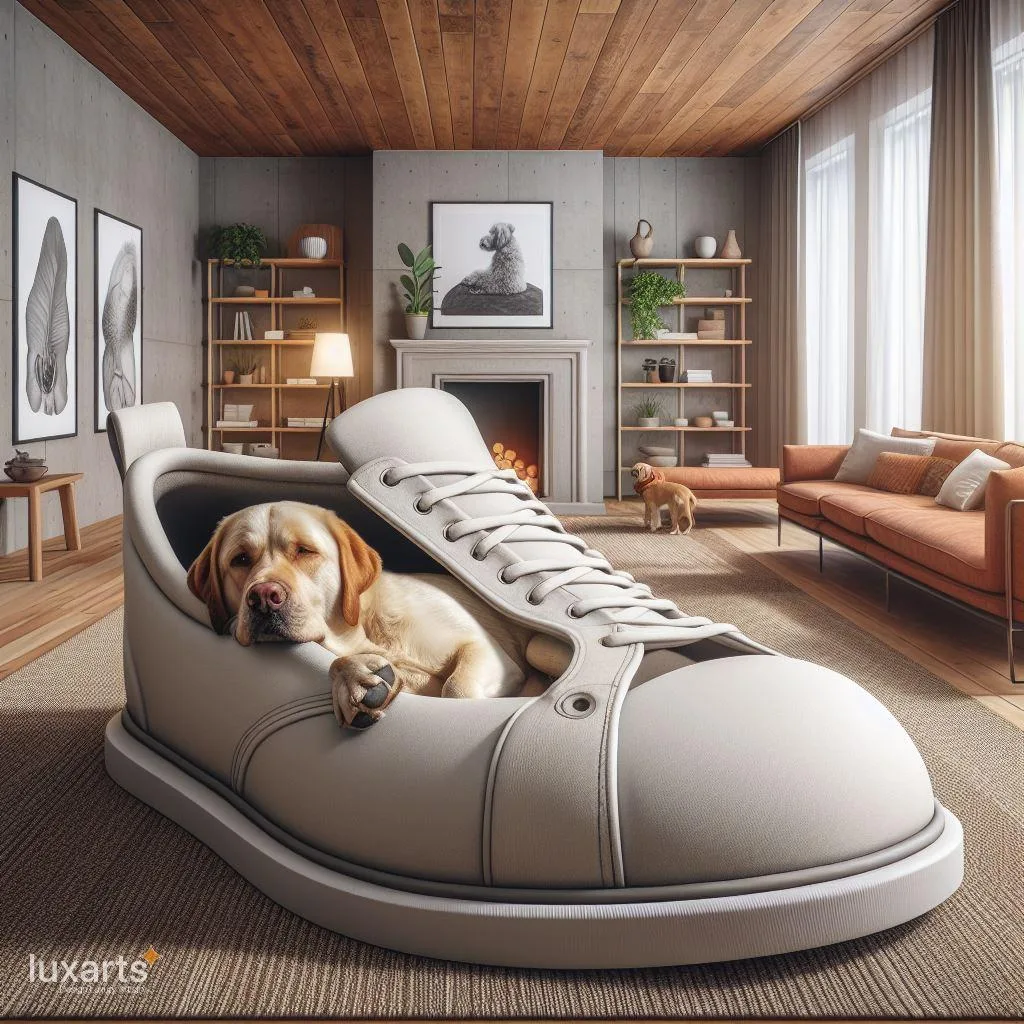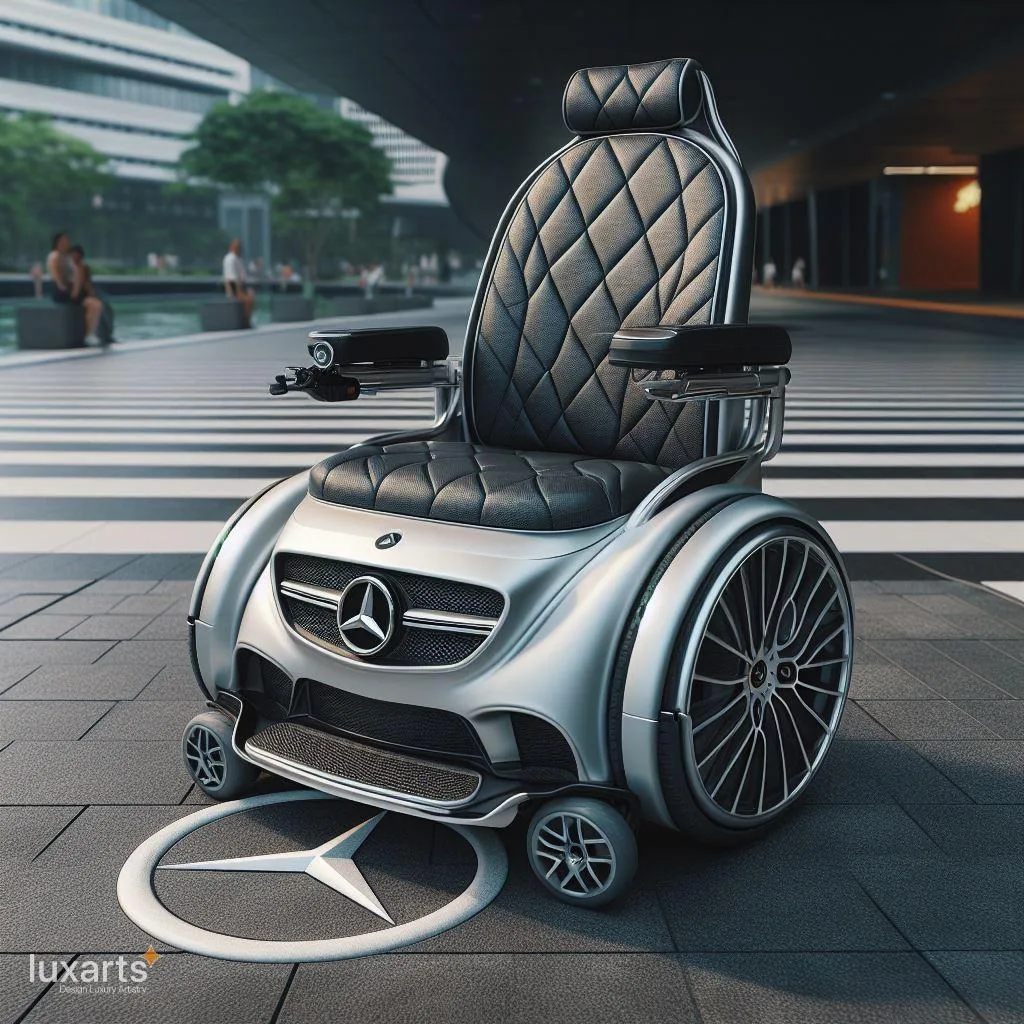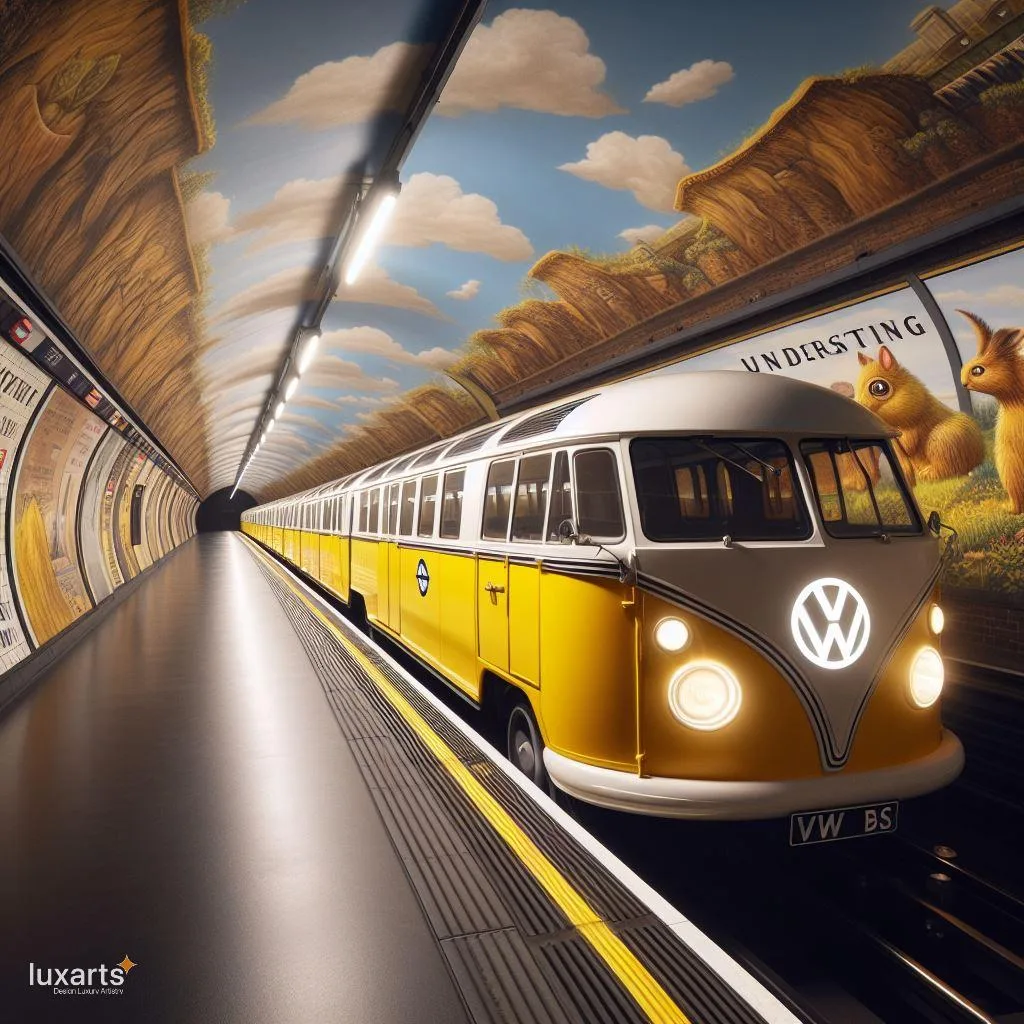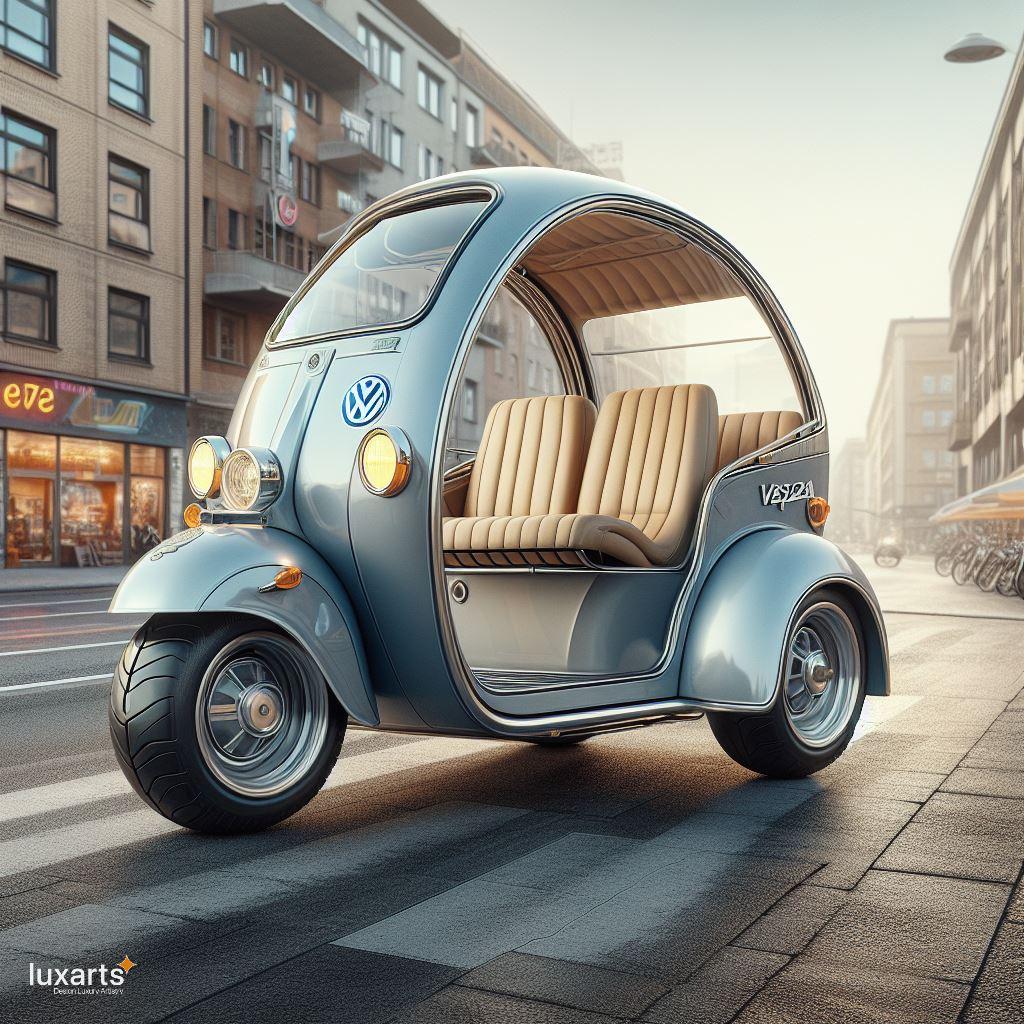When you think of Harley-Davidson , what comes to mind? The roar of the engine, the wind in your hair, the leather-clad freedom of the open road — it’s more than just a motorcycle brand; it’s a lifestyle. But what if that same rebellious spirit could be captured and reimagined for those who experience mobility differently? Enter the Harley Inspired Wheelchair — a bold, imaginative concept that fuses the iconic essence of biker culture with the world of modern accessibility design.
This article dives deep into the creative vision behind the Harley-inspired wheelchair , exploring how its design, color schemes, benefits, usage scenarios, and even maintenance ideas can inspire both function and flair. While this product is purely conceptual and not a real item on the market, it serves as a powerful symbol of empowerment, individuality, and the breaking of traditional boundaries.
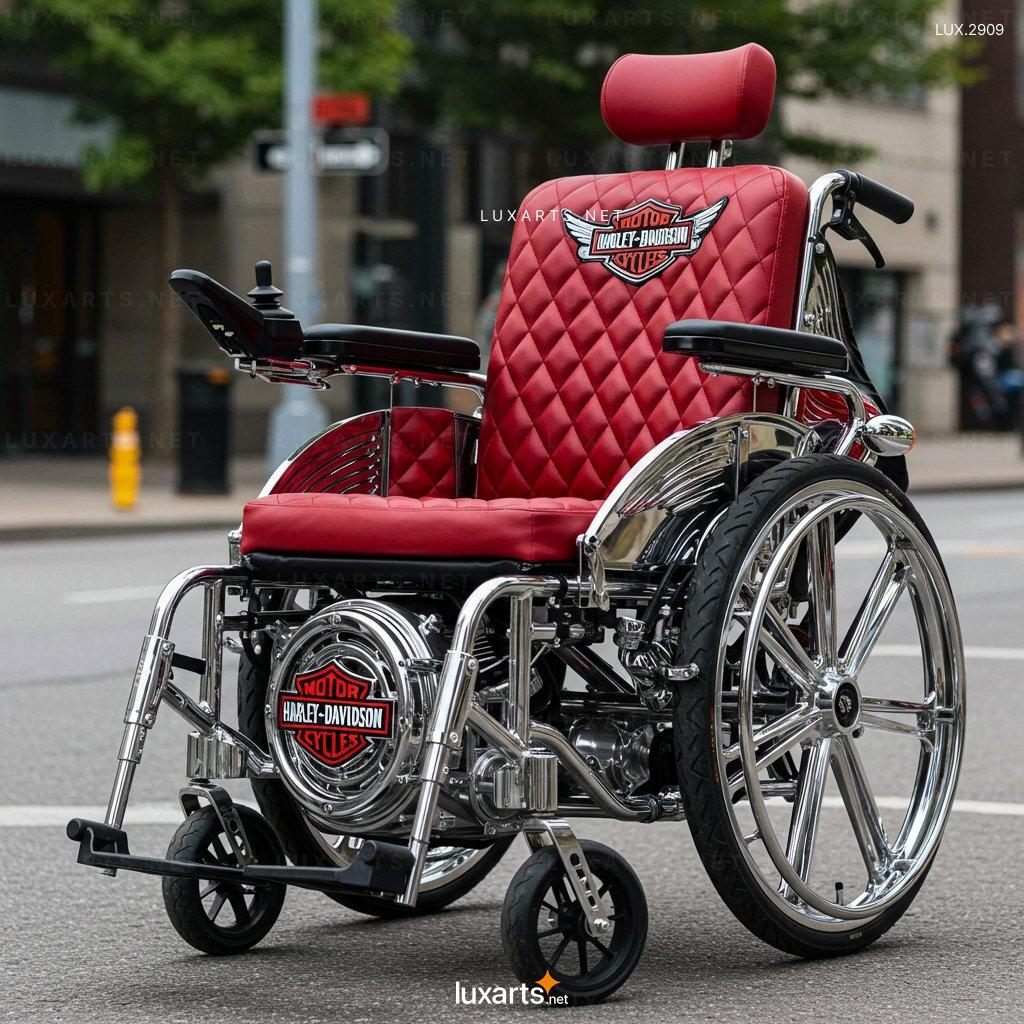
The Birth of a Bold Concept
The idea of a Harley-inspired wheelchair was born from a simple yet profound question: Why should style, identity, and freedom be limited by physical ability? In a world where motorcycles represent rebellion, independence, and the thrill of movement, why shouldn’t wheelchairs reflect the same values?
Designers and artists around the world have begun to explore this space, creating conceptual models that borrow heavily from the aesthetics of classic and modern Harley-Davidson bikes. Chrome finishes, custom paint jobs, and aggressive lines are no longer exclusive to motorbikes — they’re now part of a growing movement that celebrates mobility through the lens of attitude and artistry.
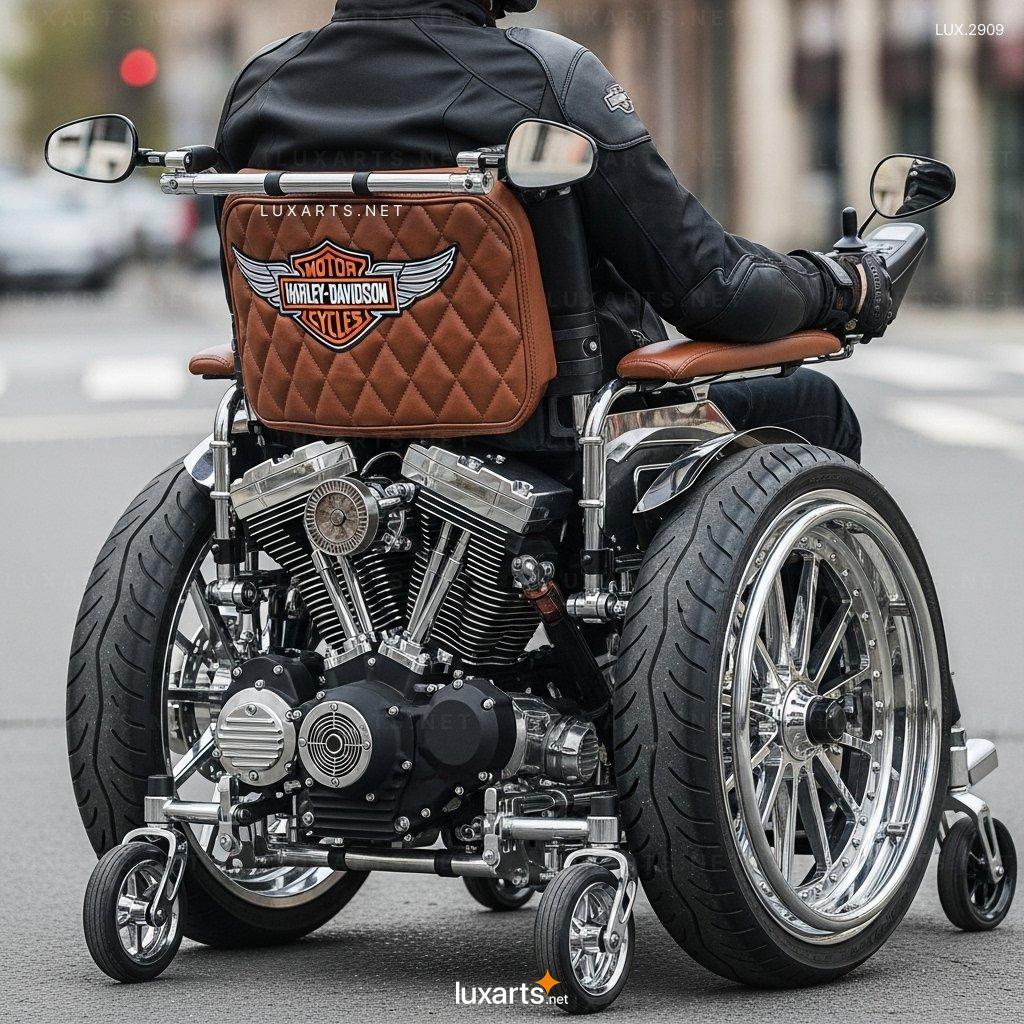
Design Philosophy: Where Mobility Meets Motorcycling
At the heart of the Harley-inspired wheelchair lies a design philosophy that goes beyond utility. It’s about crafting a device that doesn’t just help someone move — it helps them own the road . Here’s a breakdown of the key design elements:
1. Aggressive Frame Geometry
Like a chopper-style Harley, the frame of this conceptual wheelchair features extended front forks (or their equivalent in wheelchair mechanics), a lowered backrest, and a forward-leaning posture. This creates an illusion of speed and motion, even when standing still.
2. Customizable Chassis
Just like a real Harley, this chair is meant to be personalized. From bolt-on accessories to modular parts, users can customize everything from the frame shape to the seat height, giving them full control over how their ride looks and feels.
3. Integrated Lighting and Detailing
LED lights, faux exhaust pipes, and chrome accents are all part of the package. These details aren’t just decorative — they serve to enhance visibility and create a striking visual presence, turning heads wherever the chair rolls.
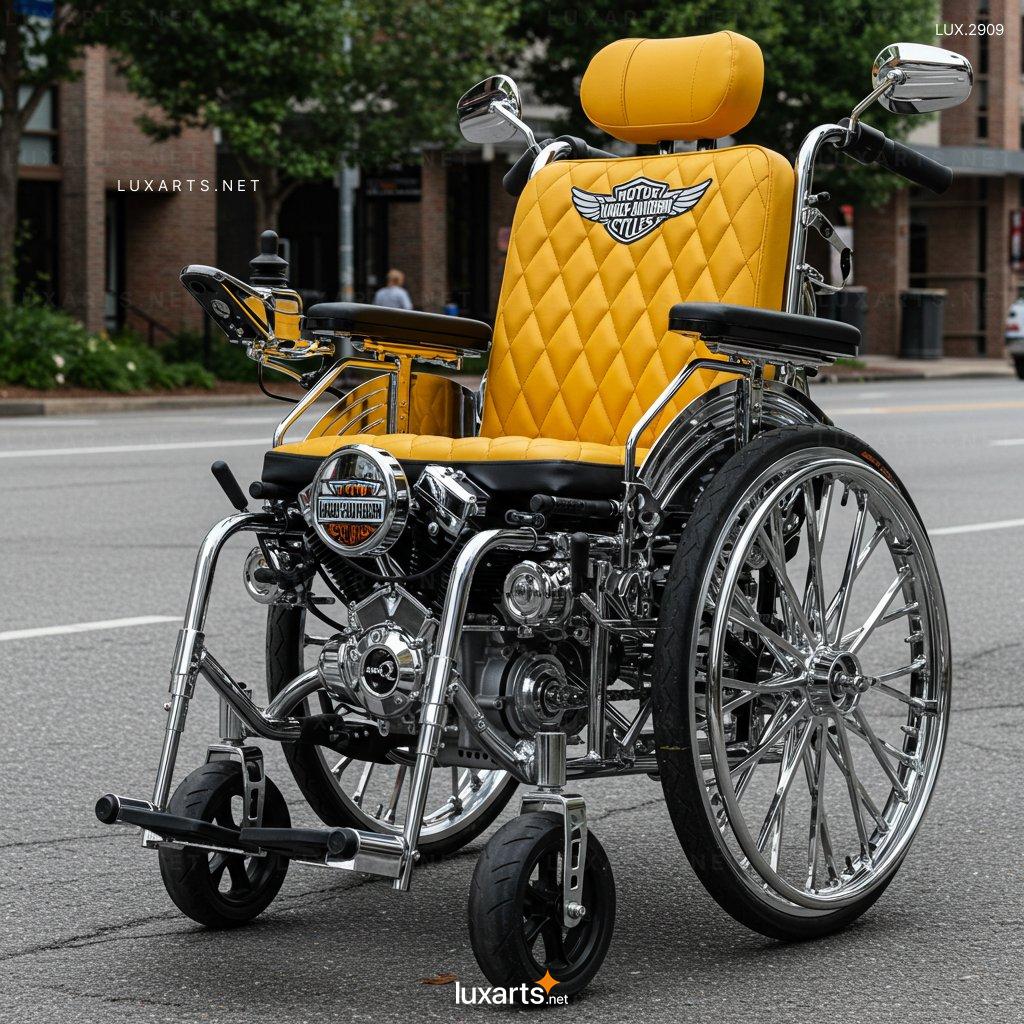
Color Schemes That Turn Heads
A Harley-inspired wheelchair wouldn’t be complete without a paint job worthy of a custom bike show. Here are some popular conceptual color themes inspired by motorcycle culture:
1. Classic Black & Chrome
Timeless and powerful, this combination reflects the raw strength of a vintage Harley. Matte black frames paired with polished chrome wheels and handlebars give off a sleek, intimidating vibe.
2. Candy Apple Red Flames
For those who want to make a statement, red flames streaking across a black background scream rebellion and energy. This theme channels the spirit of rock concerts and midnight rides.
3. Gunmetal Gray with Tribal Accents
A darker, edgier look, often seen in biker gangs and custom builds. Tribal patterns or skull motifs add a personal touch while reinforcing the rugged aesthetic.
4. Glossy Blue with Carbon Fiber Panels
Smokey blue tones mixed with carbon fiber textures offer a high-tech, futuristic twist on the traditional biker look. Perfect for those who appreciate innovation and performance.
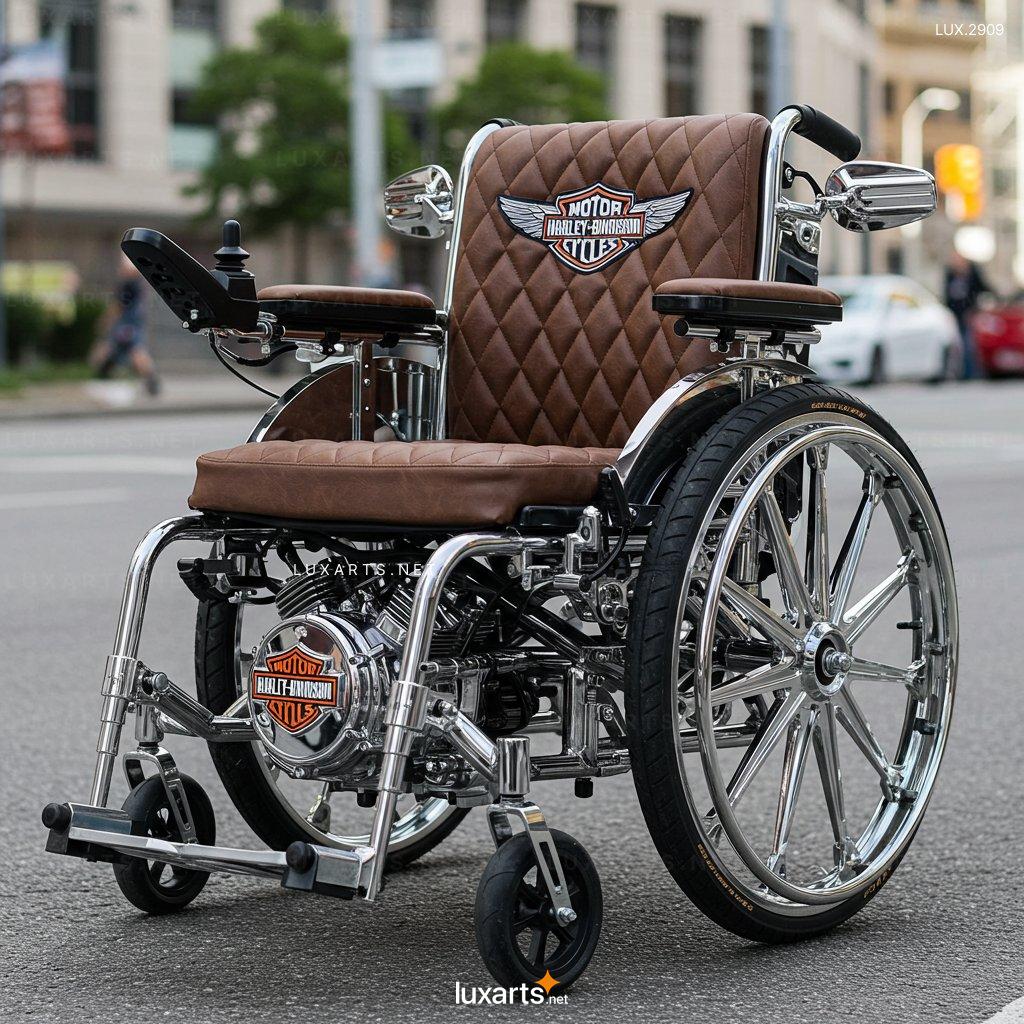
Benefits Beyond Aesthetics
While the Harley-inspired wheelchair is first and foremost a design concept, its benefits extend far beyond appearance. Let’s explore how this kind of creative thinking can positively impact users:
1. Empowerment Through Identity
One of the most overlooked aspects of mobility devices is their emotional impact. Traditional wheelchairs often carry stigmas or blend into the background. A Harley-inspired model , however, allows users to express themselves boldly and proudly — turning a tool into a statement of self-worth.
2. Increased Visibility and Safety
With attention-grabbing designs and LED lighting, these chairs can actually improve safety. Whether rolling down a sidewalk or attending a public event, enhanced visibility reduces the risk of accidents and increases awareness.
3. Boosted Confidence and Social Interaction
Wearing your personality on your wheels can spark conversations, build connections, and boost confidence. People are naturally drawn to things that stand out — and a Harley-inspired wheelchair definitely does that.
4. Encouraging Creative Expression
By pushing the boundaries of what a wheelchair can look like, designers encourage others to think creatively about assistive technology. This opens up new possibilities for future innovations in mobility aids.
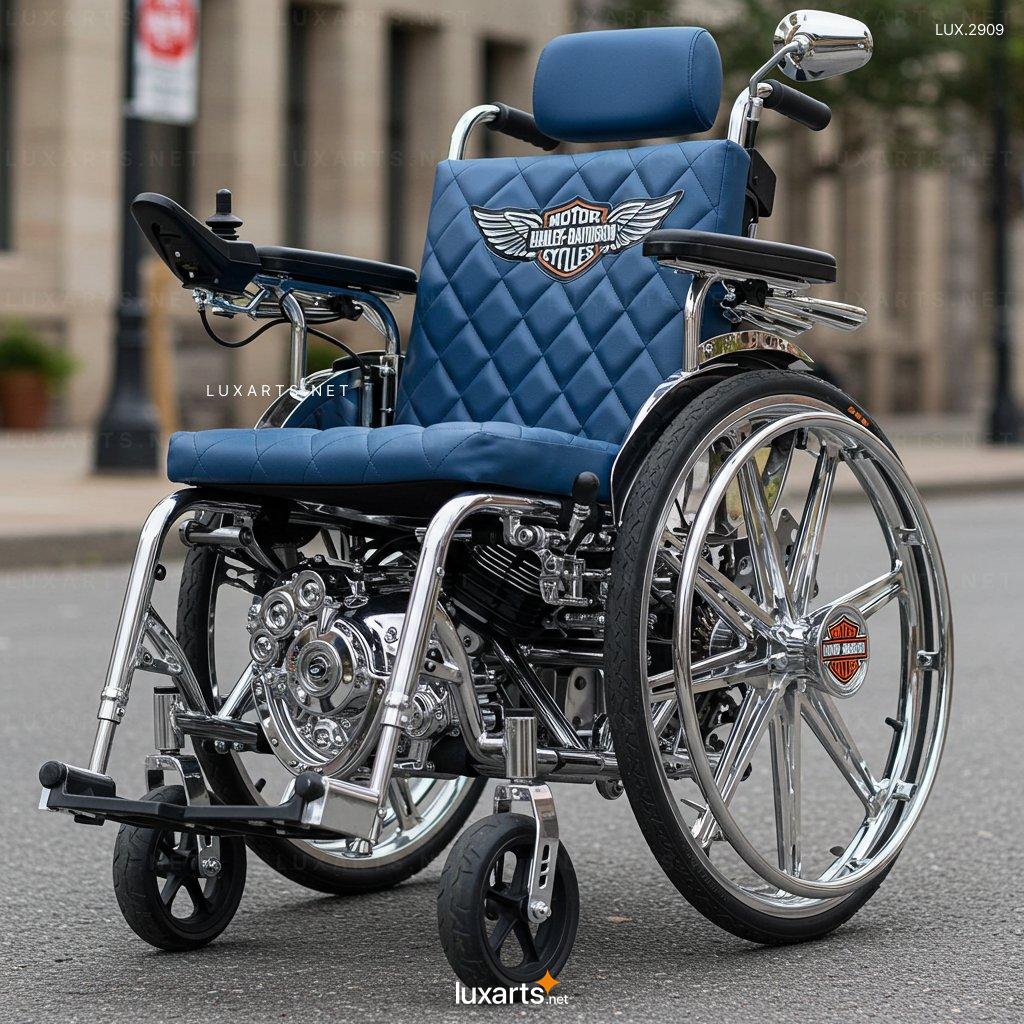
Where Can You Use a Harley-Inspired Wheelchair?
Though this is a fictional product, imagining its use in different settings adds depth to the concept. Here are some ideal environments where this chair would shine:
1. Music Festivals and Cultural Events
Picture yourself rolling through Coachella or a biker rally in a custom-painted chair that matches the vibe of the crowd. This isn’t just mobility — it’s part of the costume.
2. Urban Streets and City Parks
In bustling cities or relaxed parks, the chair becomes a mobile work of art. Its unique design makes it perfect for street photography, city tours, or simply cruising around town.
3. Art Exhibitions and Design Shows
As a piece of conceptual design, the Harley-inspired wheelchair belongs in galleries and exhibitions focused on innovation and accessibility. It challenges perceptions and invites dialogue.
4. Parades and Public Celebrations
Imagine being part of a Pride parade or a Veteran’s Day event in a chair that screams “freedom.” It’s a powerful way to celebrate life, resilience, and individuality.
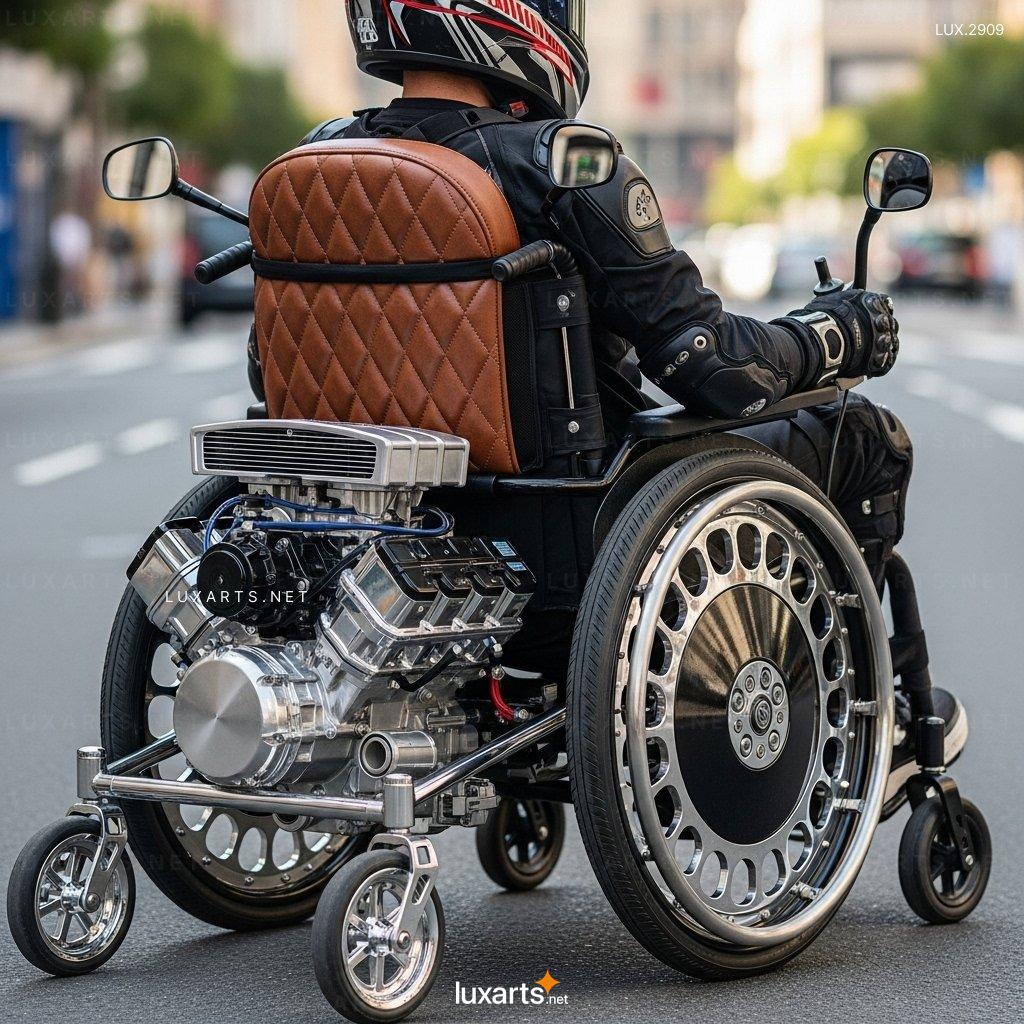
Maintenance Tips (Conceptual Insights)
Even though this is a fictional product, maintaining a device like this would involve care routines similar to those used for high-end bicycles or motorbikes. Here are some conceptual maintenance tips:
1. Regular Cleaning and Polishing
Chrome parts and painted surfaces need regular cleaning to maintain their shine. A soft cloth, mild cleaner, and wax can keep the chair looking fresh and vibrant.
2. Lubricating Moving Parts
To ensure smooth operation, bearings, joints, and hinges should be lubricated regularly. This mimics the upkeep required for a real motorcycle’s chain and suspension system.
3. Battery Care for LED Features
If the chair includes LED lights or other electronic components, battery maintenance would be essential. Rechargeable batteries should be charged regularly and stored properly when not in use.
4. Checking Structural Integrity
Periodically inspecting the frame and welds for signs of wear ensures long-term durability. Just like with a motorcycle, structural soundness is crucial for safety and longevity.
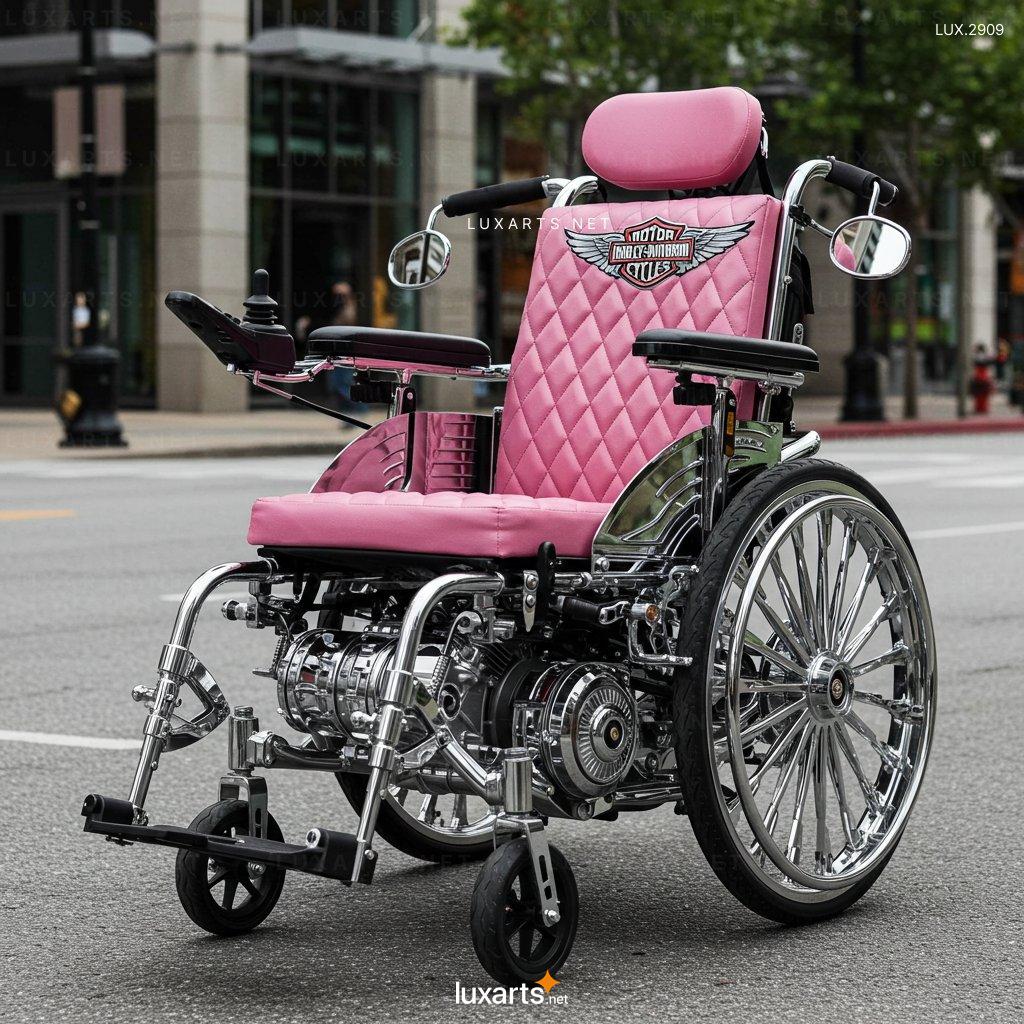
Customization Ideas to Make It Yours
Part of the appeal of a Harley-inspired wheelchair is the ability to personalize it. Here are some creative customization options:
1. Handlebar Styles
From ape hangers to drag bars, handlebar styles can be adapted to suit the user’s comfort and aesthetic preferences.
2. Seat Upgrades
Leather upholstery, stitching details, and ergonomic contours can transform a basic seat into a luxury feature.
3. Faux Exhaust Pipes
Adding non-functional but stylish exhaust pipes gives the chair a true biker feel, echoing the look of a real Harley.
4. Decals and Stickers
Personalized stickers, patches, or embroidered emblems allow users to tell their story visually.
5. Sound Effects
Some conceptual versions might include subtle engine sounds or rumble effects to enhance the immersive experience.
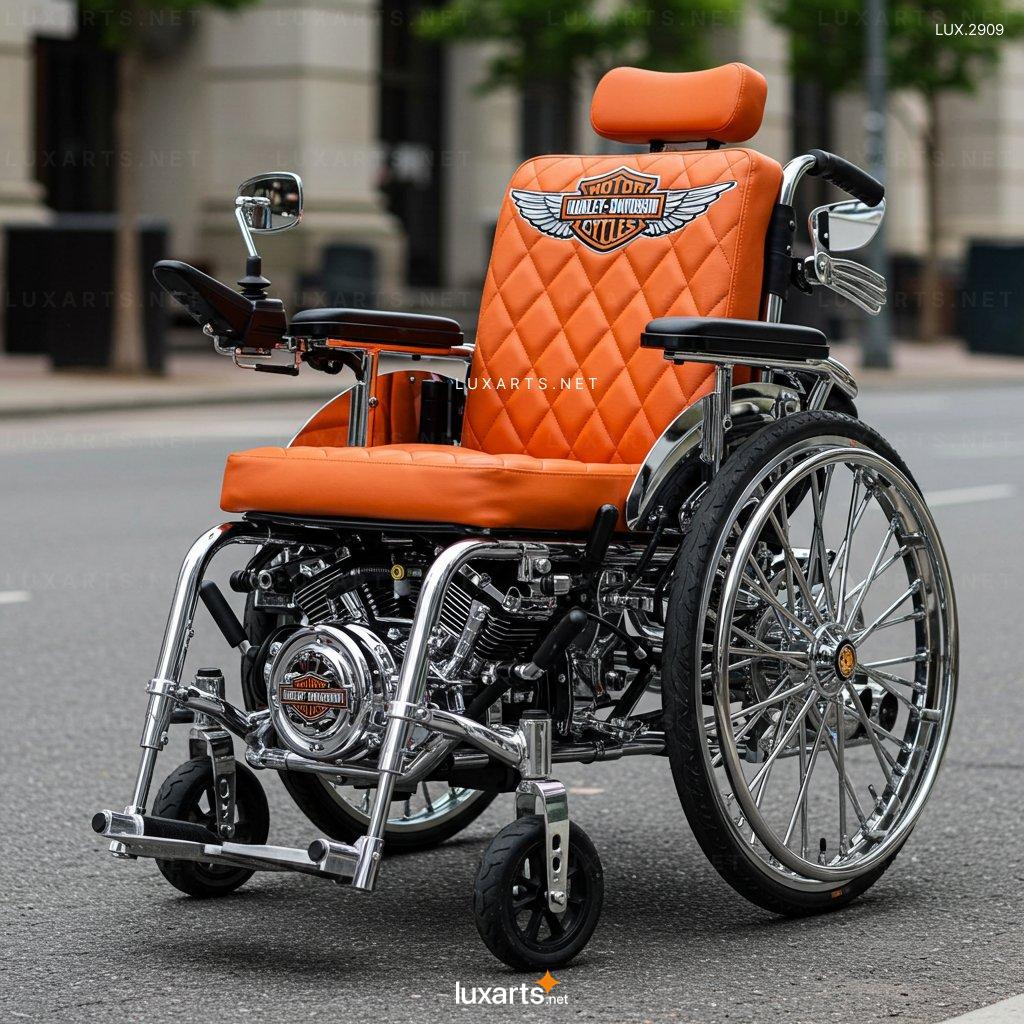
Inspiring Future Innovations
The Harley-inspired wheelchair is more than just a cool idea — it’s a catalyst for change. By blending mobility with motorcycle culture, it challenges outdated notions about disability and encourages inclusive design thinking.
Future iterations could explore smart technology integration, eco-friendly materials, or even adaptive robotics — all while keeping that unmistakable biker edge.
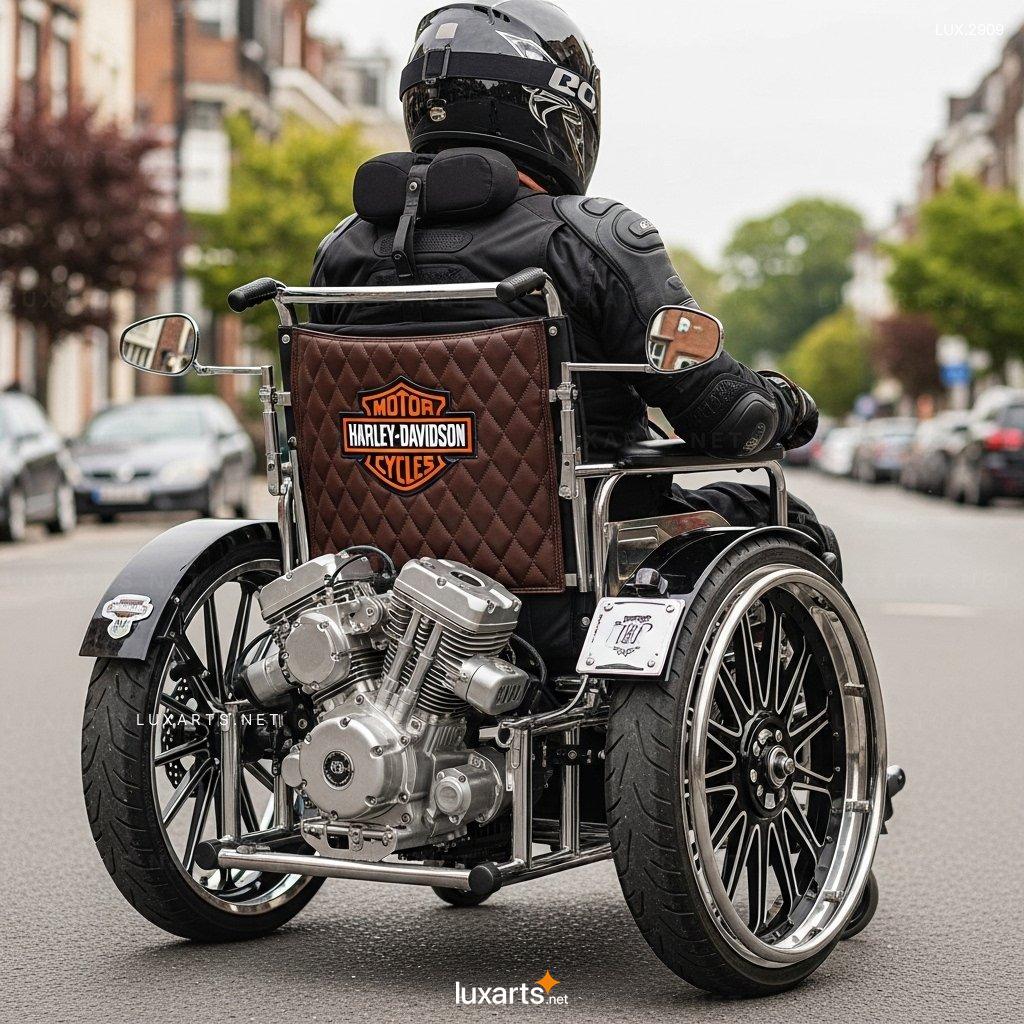
Conclusion: Freedom Has No Limits
The Harley-inspired wheelchair is a celebration of freedom, creativity, and the human spirit. It proves that mobility doesn’t have to be clinical or boring — it can be bold, beautiful, and badass. Whether you’re a designer, artist, or simply someone who appreciates the finer things in life, this concept reminds us that expression knows no bounds.
So go ahead — unleash your inner biker. Imagine a world where every roll is a ride, every turn is a statement, and every moment is lived with passion. Because with the right mindset, mobility isn’t a limitation — it’s liberation .
NOTE: All images in this post are AI-generated and intended solely for inspiration. These are not real products available for sale, and we do not operate any online store or website for purchases.
